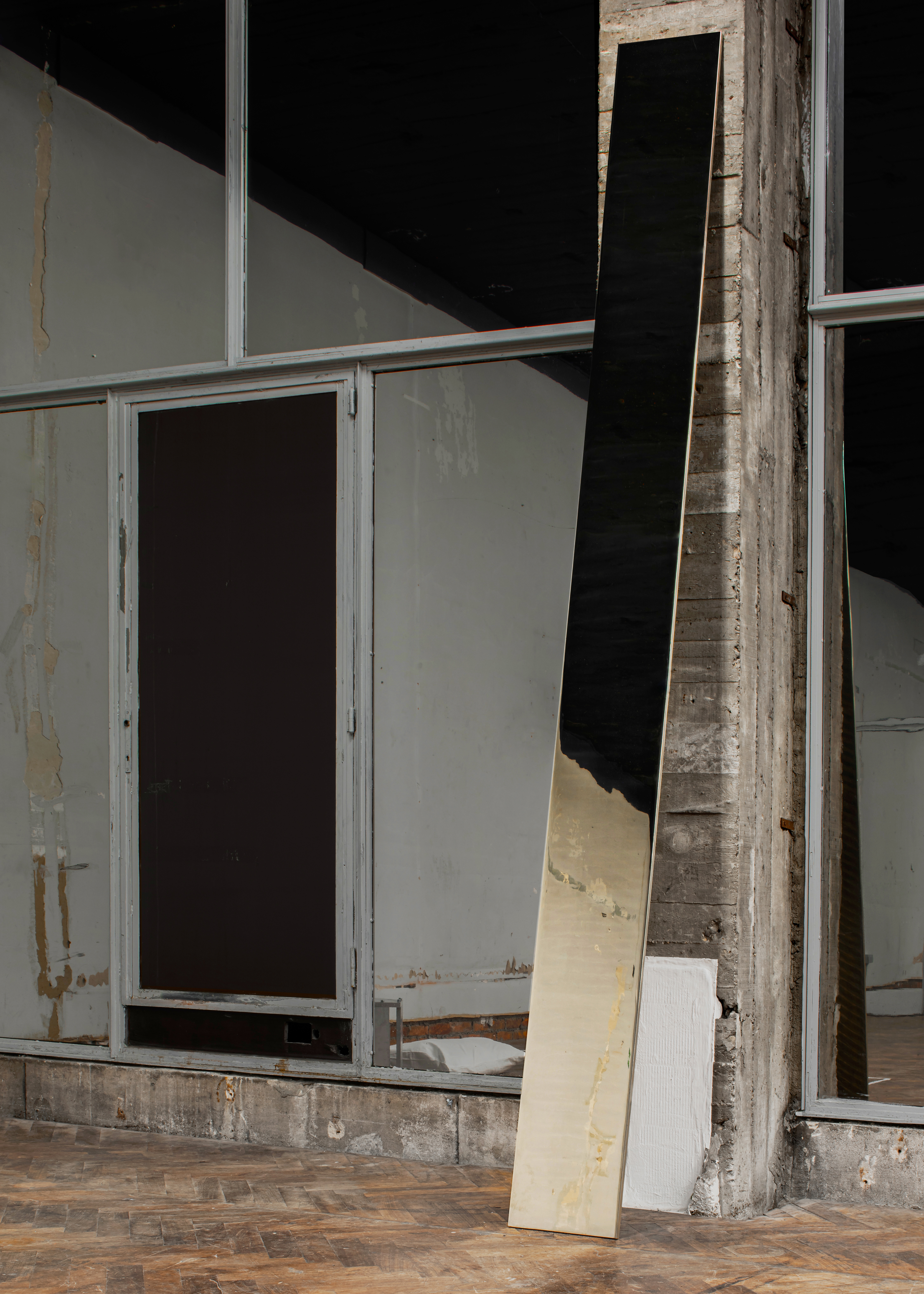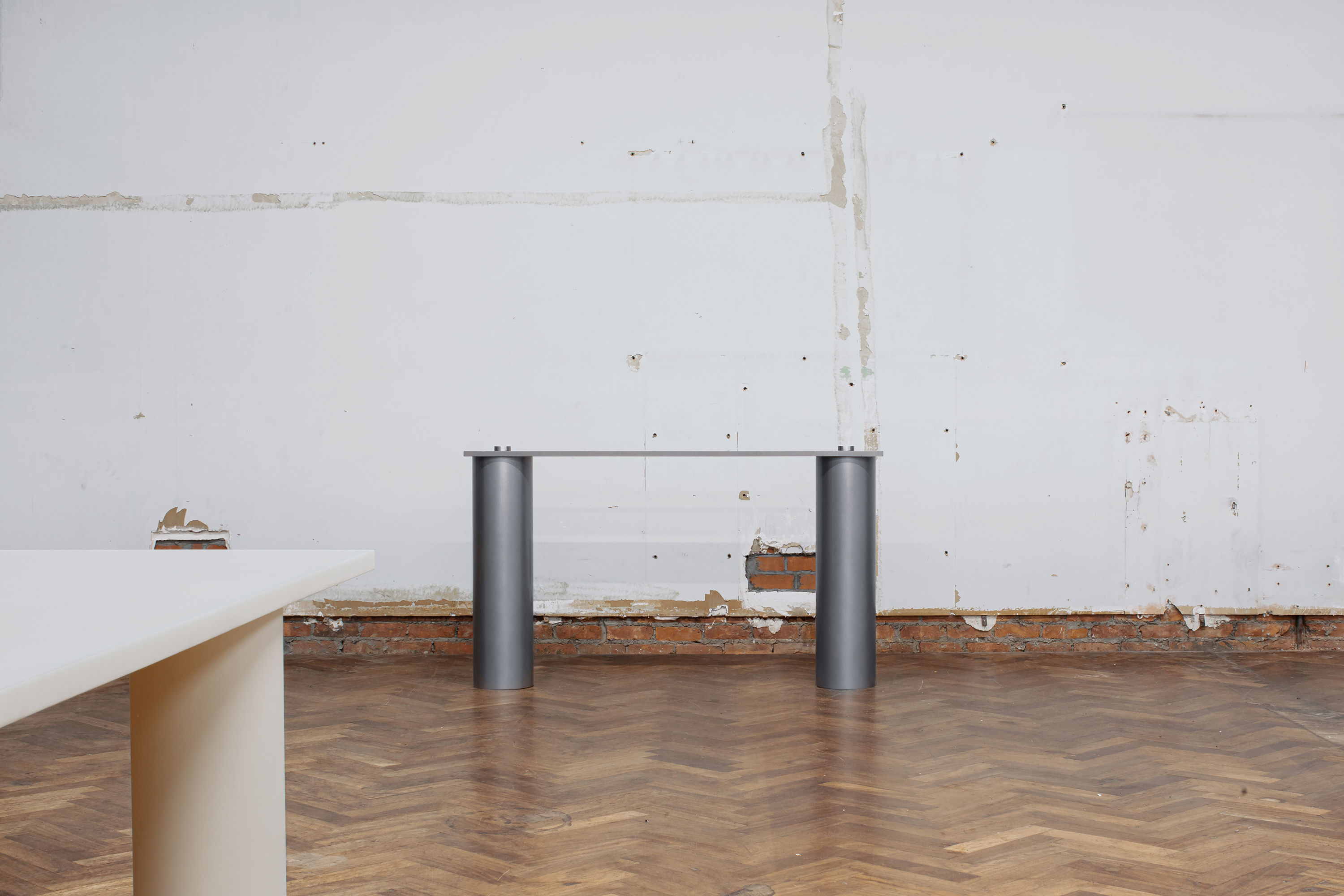Blueprint
Various Materials / Various Dimensions / Eleven Steens / Brussels / January 24th - March 15th 2020

Blueprint was the first opportunity I had to display my work in its entirety and within a ‘controlled’ setting. For this show I wanted to recreate an apartment-like situation. A space that the public could perceive as a livable environment, and in which the pieces would be displayed directly on the floor, without podiums, barriers or titles, as they would be in a home. The lines of traditional elements - chairs, couch and bed - are drawn on the floor using white tape to help differentiate various ‘rooms’. Props are spread throughout the space and materialize the presence of a user, strengthening the idea that the pieces are designed to be interacted with.
The title ‘Blueprint’ and the scenography suggest that the twelve pieces presented are to be considered as proposals and principles rather than static objects. Indeed the works can stretch, extend and multiply, they are not bound to specific shapes or materials. Each piece originates from a continuing work series entitled Ratio and explores the forms and archetypes generated by industrially produced elements. The design of the objects - rather than being based on classical human measurements - originates from the norms of the material itself. Here, copper bars, polyamide plates, aluminum profiles, steel tubes and bronze profiles are used in various ways to create functional structures. All connections and assembly systems are visible and designed to allow for every piece to be easily disassembled. All materials are worked in order to express their purest forms and each structure is reduced to an absolute minimum, thus giving full light to the work of proportions and materializing the most fundamental expression of a bench, a shelf, a table or a mirror.
Using the norms, rules and standards of mass production generated a new typology of objects, functional but at the very edge of inadequacy. In this scenery, the human is almost neglected and denied its usual comfort, dimensions and proportions are no longer centered on its needs but instead fulfill a productive ideal. These non-user centered pieces shift away from traditional commercial and consumerist values to favor a rational living. They neglect ergonomics and classical notions of comfort to enable the development of new parameters for furniture and object designs, parameters that make productivity, timelessness, and transparency not just added values but primary necessities.
The title ‘Blueprint’ and the scenography suggest that the twelve pieces presented are to be considered as proposals and principles rather than static objects. Indeed the works can stretch, extend and multiply, they are not bound to specific shapes or materials. Each piece originates from a continuing work series entitled Ratio and explores the forms and archetypes generated by industrially produced elements. The design of the objects - rather than being based on classical human measurements - originates from the norms of the material itself. Here, copper bars, polyamide plates, aluminum profiles, steel tubes and bronze profiles are used in various ways to create functional structures. All connections and assembly systems are visible and designed to allow for every piece to be easily disassembled. All materials are worked in order to express their purest forms and each structure is reduced to an absolute minimum, thus giving full light to the work of proportions and materializing the most fundamental expression of a bench, a shelf, a table or a mirror.
Using the norms, rules and standards of mass production generated a new typology of objects, functional but at the very edge of inadequacy. In this scenery, the human is almost neglected and denied its usual comfort, dimensions and proportions are no longer centered on its needs but instead fulfill a productive ideal. These non-user centered pieces shift away from traditional commercial and consumerist values to favor a rational living. They neglect ergonomics and classical notions of comfort to enable the development of new parameters for furniture and object designs, parameters that make productivity, timelessness, and transparency not just added values but primary necessities.









